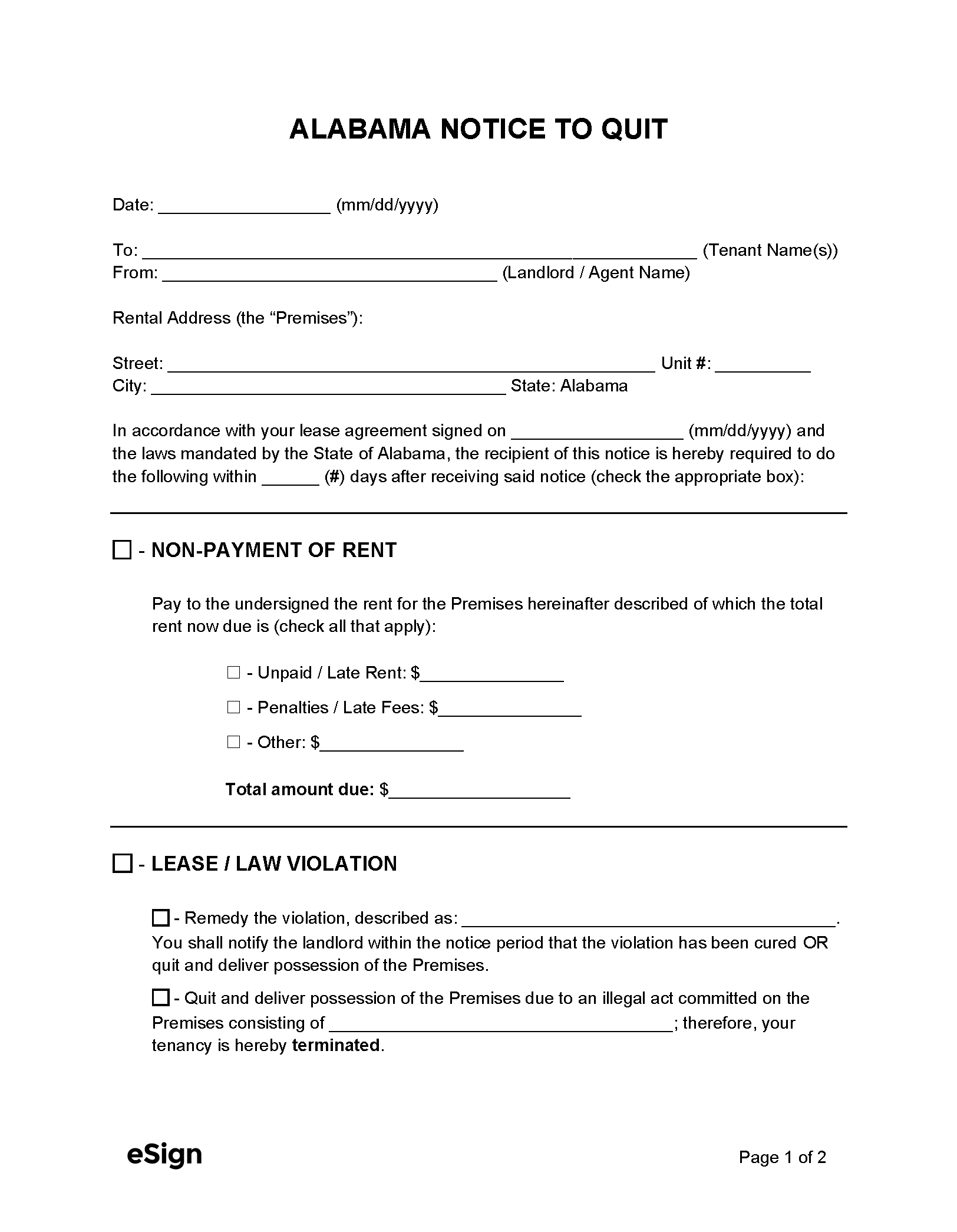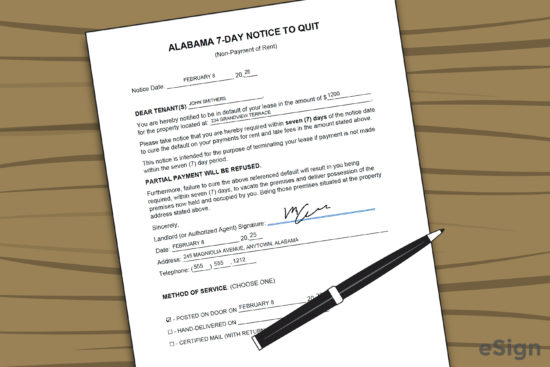Eviction Notices: By Type (4)
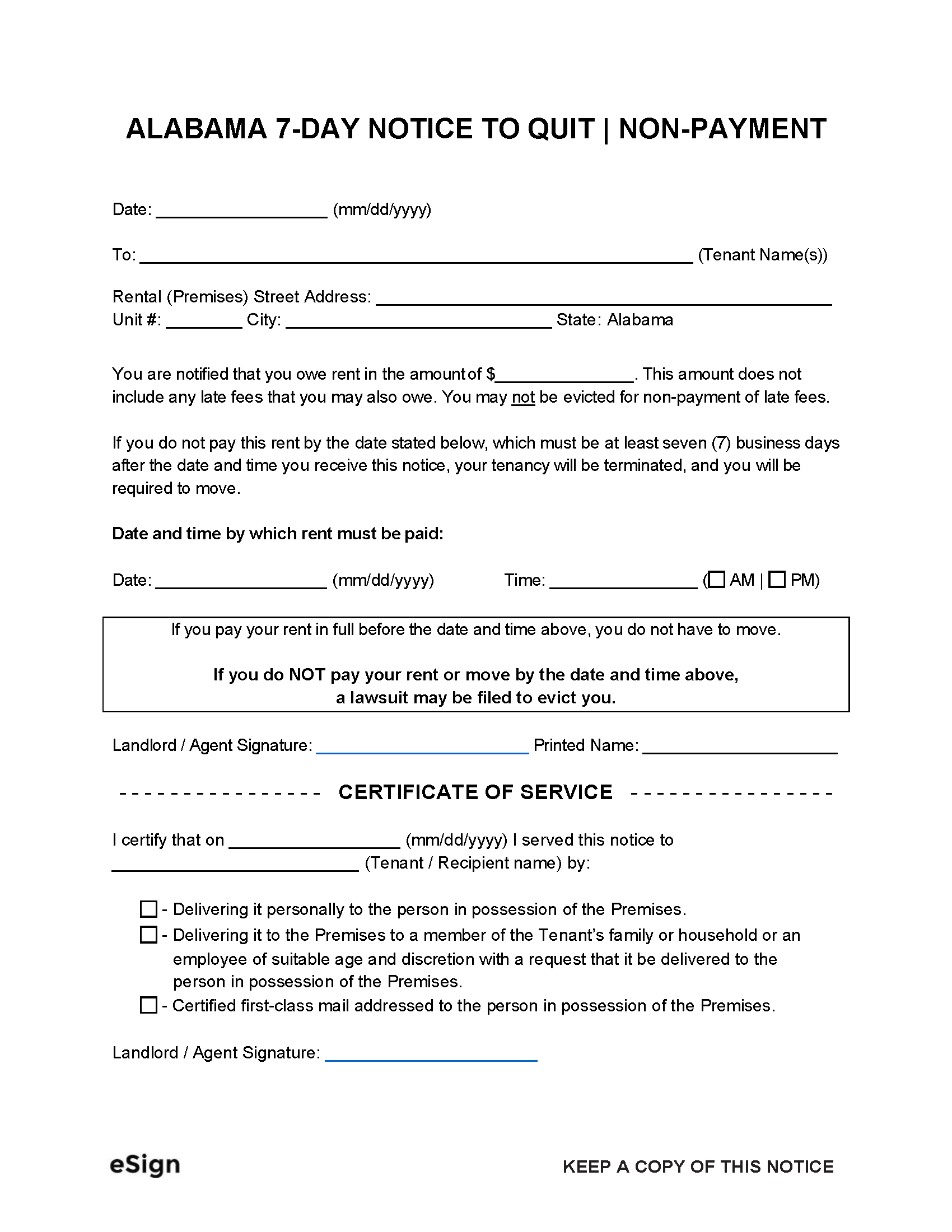 7-Day Notice to Quit | Non-Payment – Used to notify a tenant that they are behind on rent and have seven days to pay or leave. 7-Day Notice to Quit | Non-Payment – Used to notify a tenant that they are behind on rent and have seven days to pay or leave.
Download: PDF, Word (.docx), OpenDocument |
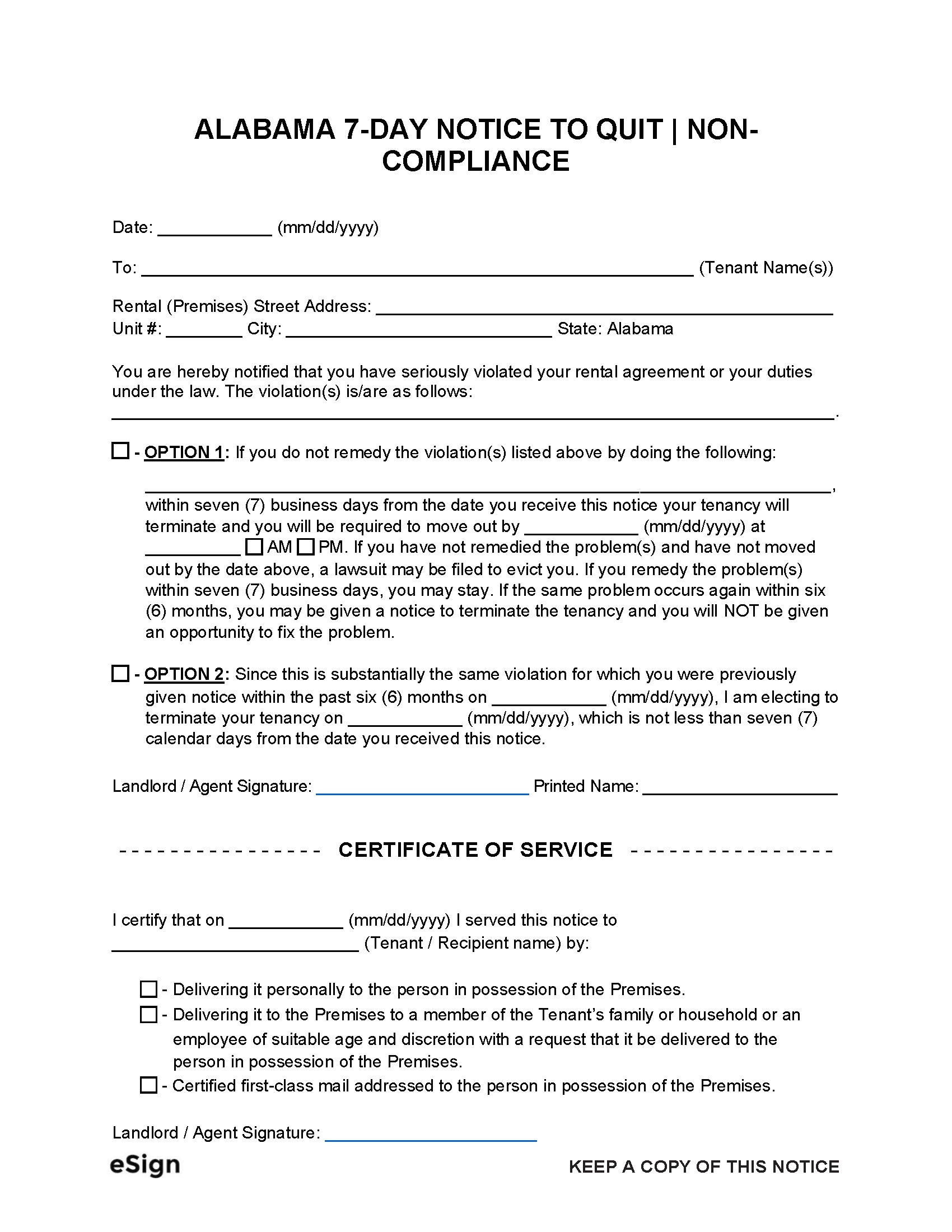 7-Day Notice to Quit | Non-Compliance – Sent to a tenant when the lease has been violated in any manner except late rent or illegal activity. 7-Day Notice to Quit | Non-Compliance – Sent to a tenant when the lease has been violated in any manner except late rent or illegal activity.
Download: PDF, Word (.docx), OpenDocument |
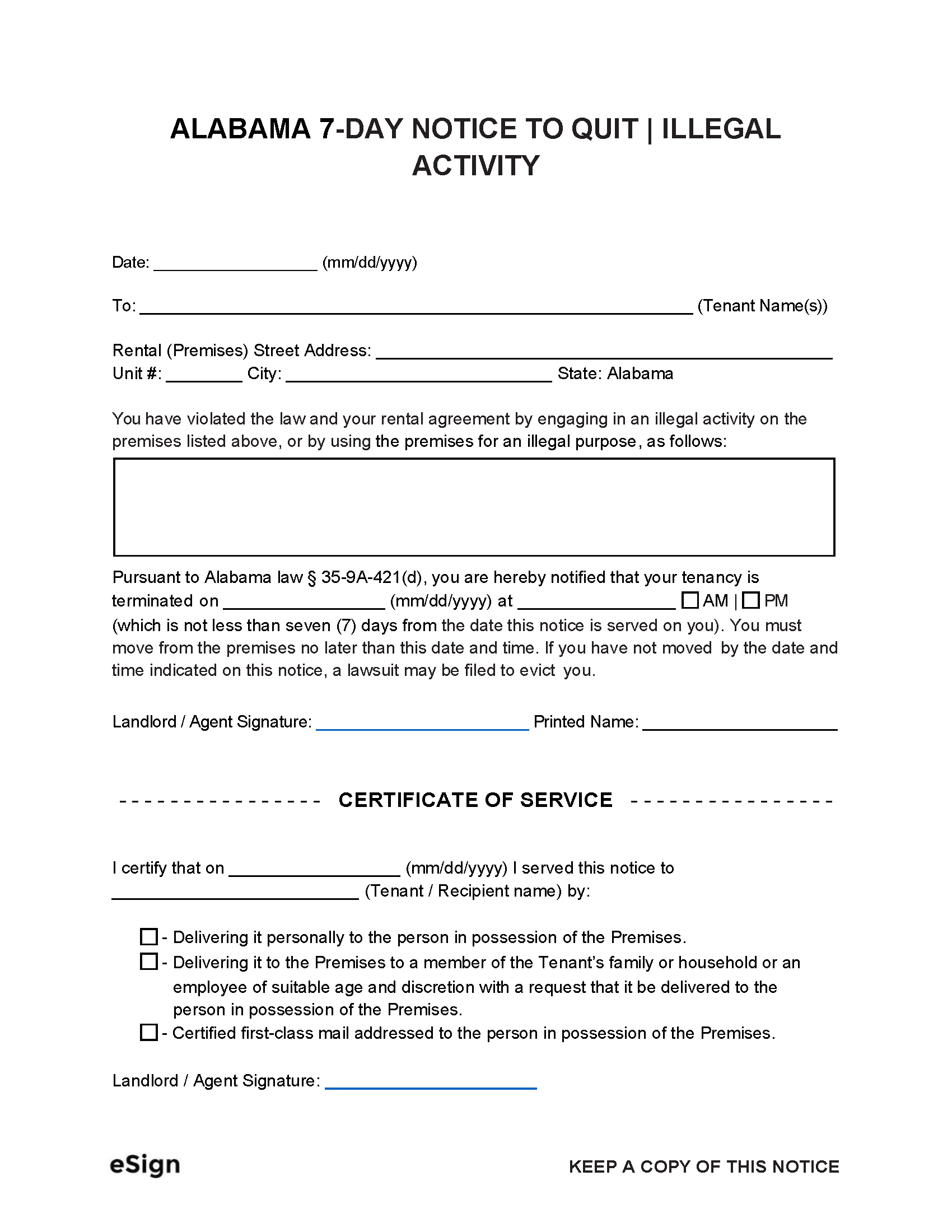 7-Day Notice to Quit | Illegal Activity – Sent if a tenant commits an illegal act on the property. 7-Day Notice to Quit | Illegal Activity – Sent if a tenant commits an illegal act on the property.
Download: PDF, Word (.docx), OpenDocument |
 30-Day Notice to Terminate | Month-to-Month Lease – Used to terminate a month-to-month lease. 30-Day Notice to Terminate | Month-to-Month Lease – Used to terminate a month-to-month lease.
Download: PDF, Word (.docx), OpenDocument |
Notice Requirements
How to Evict a Tenant in Alabama
Step 1 – Complete Notice
If a tenant breaks the terms of their lease, the landlord must first prepare a notice to quit to inform them of their violation.
Step 2 – Deliver Notice

Step 3 – File Statement of Claim

Step 4 – Attend Hearing

Step 5 – Writ of Possession

Court Forms + Resources
Forms
- Answer to Landlords Claim (Form PS-01)
- Signed by: Tenant
- Statement of Claim – Eviction/Unlawful Detainer (Form C-59)
- Signed by: Landlord
- Writ of Possession
- Signed by: Judge
Resources

